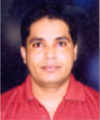| Speaker Name | Mr. G C Deka |
| Title | NoSQL Databases |
Biography

Mr. G C Deka,Assistant Director, Ministry of Labour & Employment, Govt. of India
Abstract
Distributed data replication and partitioning are the two fundamentals to sustain enormous growth in data volume, velocity and value in the cloud. In a traditional database cluster, data must either replicate across the members of the cluster or partitioned between them. Shipping data manually to distant cloud servers are time-consuming, risky and expensive process and hence network is the best option for data transfer among distributed and diverse database systems. Relational databases are difficult to dynamically and efficiently provision on demand to meet cloud requirement. So NoSQL databases are a new breed of databases in order to overcome all the identified limitations and drawbacks of RDBMS. The goal of NoSQL is to provide scalability, availability and meet other limitations of RDBMS for cloud computing.
The common motivation of NoSQL design is to meet scalability and failover. In most of the NoSQL database systems, data is partitioned and replicated across multiple nodes. Inherently, most of them use either Google’s MapReduce or Hadoop Distributed File System or Hadoop MapReduce for data collection. Cassandra, HBase and MongoDB mostly used and they can be termed as the representative of NoSQL world. CAP theorem states that optimization for only 2 out of 3 priorities of a distributed database i.e. Consistency (C), Availability (A), and Partition Tolerance (P) are possible leading to combinations of CA, CP and AP. There are a number of NoSQL databases with different features and functionality. This tutorial discusses 10 popular NoSQL databases under 5 categories for CAP analysis.
Outline
Introduction to cloud computing (Historical Background 10 slides)
NoSQL (5 Categories of NoSQL 10-15 slides)
Discussion of Cloud Database (with a focus on CAP theorem 5-10 slides)
CAP analysis of 10 popular databases (10-20 slides)
Practical session on MongoDB